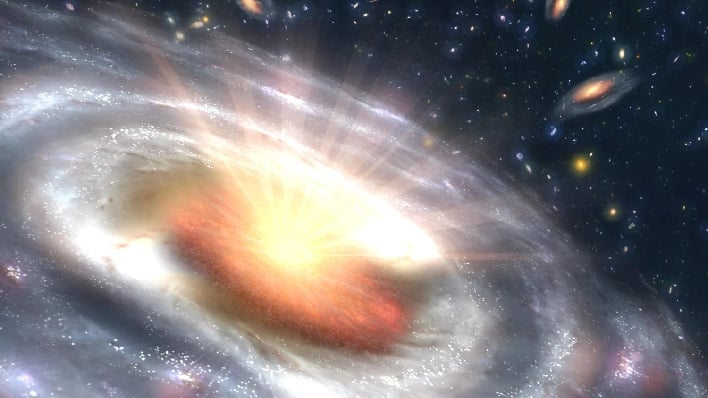NASA's Cosmic Magnifying Glass Discovers Most Distant Black Hole Ever Seen

The team of researchers used the combined data from NASA's Chandra X-ray Observatory and the James Webb Space Telescope to make its discovery. According to NASA, the result of the find may explain how some of the first supermassive black holes formed in the universe. The image below shows the galaxy cluster Abell 2744 that UHZ1 is located behind and close-ups of the black hole host galaxy UHZ1.
"We needed Webb to find this remarkably distant galaxy and Chandra to find its supermassive black hole," remarked Akos Bogdan of the Center for Astrophysics and lead author of the recently published paper. "We also took advantage of a cosmic magnifying glass that boosted the amount of light we detected."
The magnifying effect Bogdan mentioned is known as gravitational lensing. This effect is much like how the Sun bends light from distant stars that pass close to it. Or when an immense object like a galaxy distorts the light from another much farther away object. NASA says the closer object acts like a "lens," revealing a more distant object.
The team found the black hole in a galaxy named UHZ1, located 3.5 billion light-years from Earth and near the galaxy cluster Abell 2544. Data from Webb, however, revealed that the galaxy is much more distant than the cluster, at 13.2 billion light-years from Earth, indicating the universe was only 3% of its current age.
NASA says the discovery is vital for understanding how some supermassive black holes can reach colossal masses so soon after the big bang. Researchers question if they form directly from the collapse of massive gas clouds, creating black holes weighing between 10,000 and 100,000 Suns. Or perhaps they originate from explosions of the first stars that create black holes weighing only between 10 and 100 Suns.
"We think that this is the first detection of an 'Outsize Black Hole' and the best evidence yet obtained that some black holes form from massive clouds of gas," remarked co-author Priyamvada Natarajan. "For the first time, we are seeing a brief stage where a supermassive black hole weighs about as much as the stars in its galaxy, before it falls behind."
The researchers plan on continuing to delve into the data from Webb and other telescopes to create a larger picture of the early universe. The paper describing the results of the black hole detection can be viewed online on the Nature Astronomy website.


